Orbit combination weight
The orbit combination employs an ACs-wise weighting method in which the weight assigned to a specific product depends on its consistency in relation to the combined orbit.
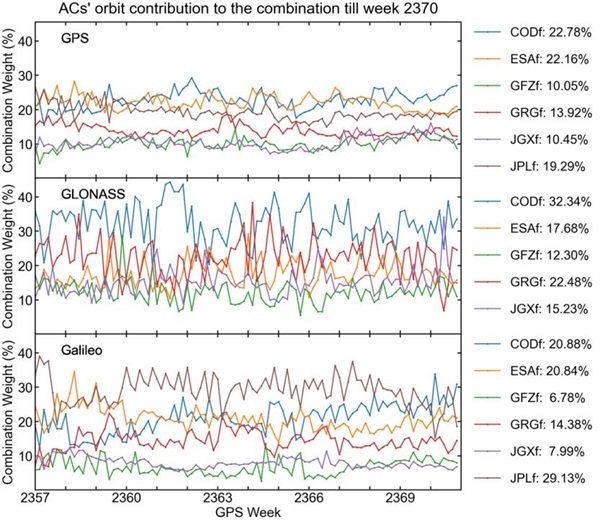
ACs’ transformation parameters
The differences in satellite orbits, relative to the combined orbit coordinate frame for each AC, are expressed in terms of seven parameters.
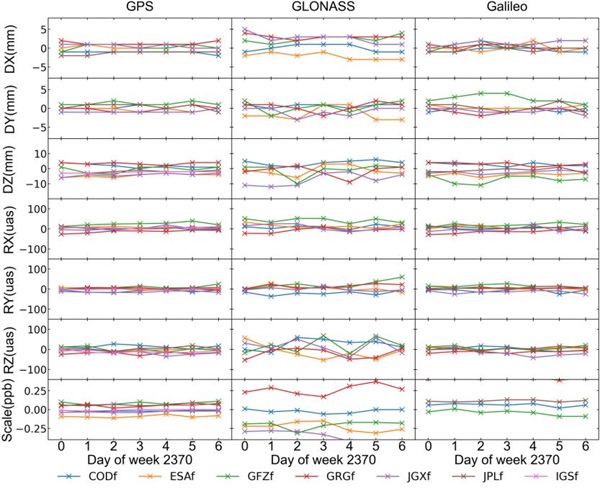
The weekly orbit RMSE
The orbit RMSE refers to the daily RMSE of orbit for each AC with respect to the combined orbit, which reflects the precision of orbit combination and the consistency between individual ACs. Each grid represents a satellite on a particular day. Blank grids mean unavailable products and a slash inside means an outlier excluded from the combination. The statistics at the bottom indicate the overall RMSE of AC orbit for this week.
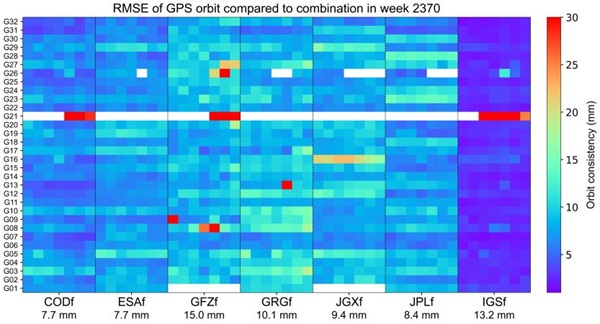
Clock/bias combination weight
The clock combination employs an iterative weighting method in which the weight assigned to a specific product depends on its residuals in relation to the combined clock.
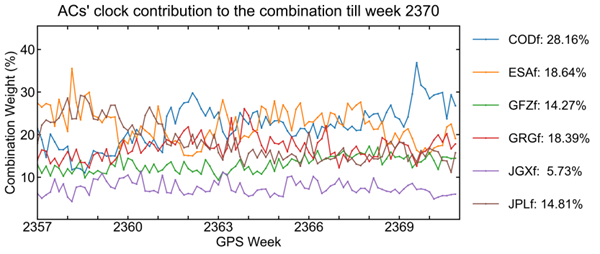
The weekly clock/bias RMSE
The clock/bias RMSE refers to the daily RMSE of clock/bias for each AC with respect to the combined integer clock, which reflects the precision of clock and bias combination and the consistency between individual ACs. Each grid represents a satellite on a particular day. Blank grids mean unavailable products and a slash inside means an outlier excluded from the combination. The line chart below shows the satellite clock outlier rate per day for each AC, with gray block indicating that relevant satellite clocks do not participate in the comparison. The statistics at the bottom indicate the overall RMSE of AC clock/bias for this week.
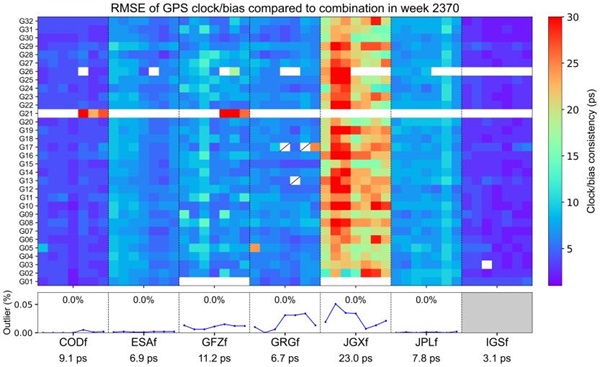
The clock/bias Allan Deviation
Modified Allan Deviation (MDEV) is used to characterize the frequency stability and noise properties of the clock. Different curves represent products from different analysis centers. Comprehensive products are indicated in bold red, respectively, the smaller the MDEV, the better the stability of the clock products.
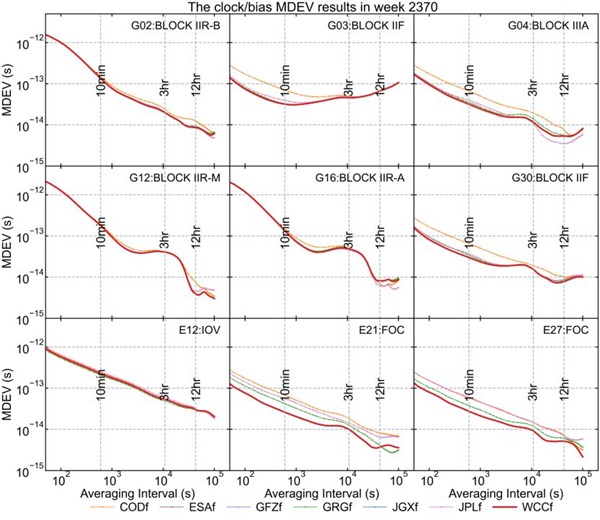
Day boundary discontinuity
Day boundary discontinuity refers to the difference between the clock at 24:00:00 and its counterpart the next day at 00:00:00. The image shows the cumulative day boundary discontinuity of the WCC products to date to reflect the overall continuity of the WCC.
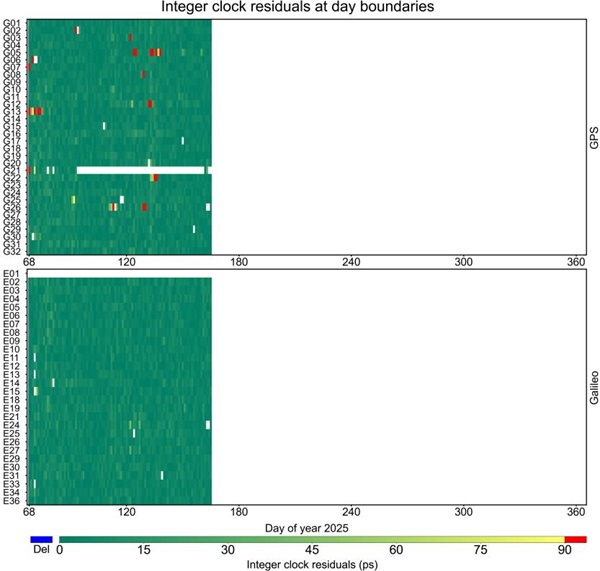
PPP-AR validation
The GPS/Galileo data with a sampling interval of 300 s from 10 globally distributed stations are processed for PPP-AR in a static mode with the PRIDE PPP-AR software. The fixing rate and position precision of each single constellation solution are presented in the figure below. IGS daily SINEX products are used as reference solution. “WCC” stands for the combined products.
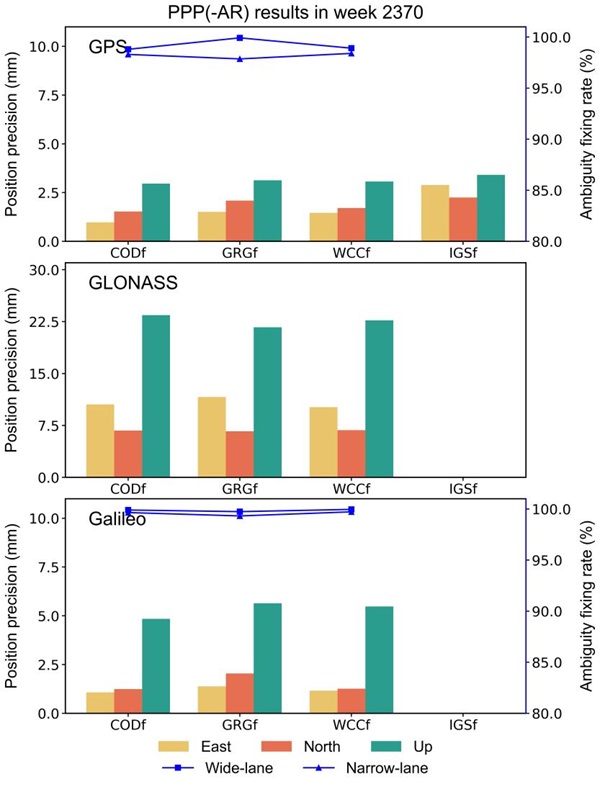
Copyright PRIDELAB IN GNSS CENTER , Wuhan University Visits:221128 Powered by Truesing